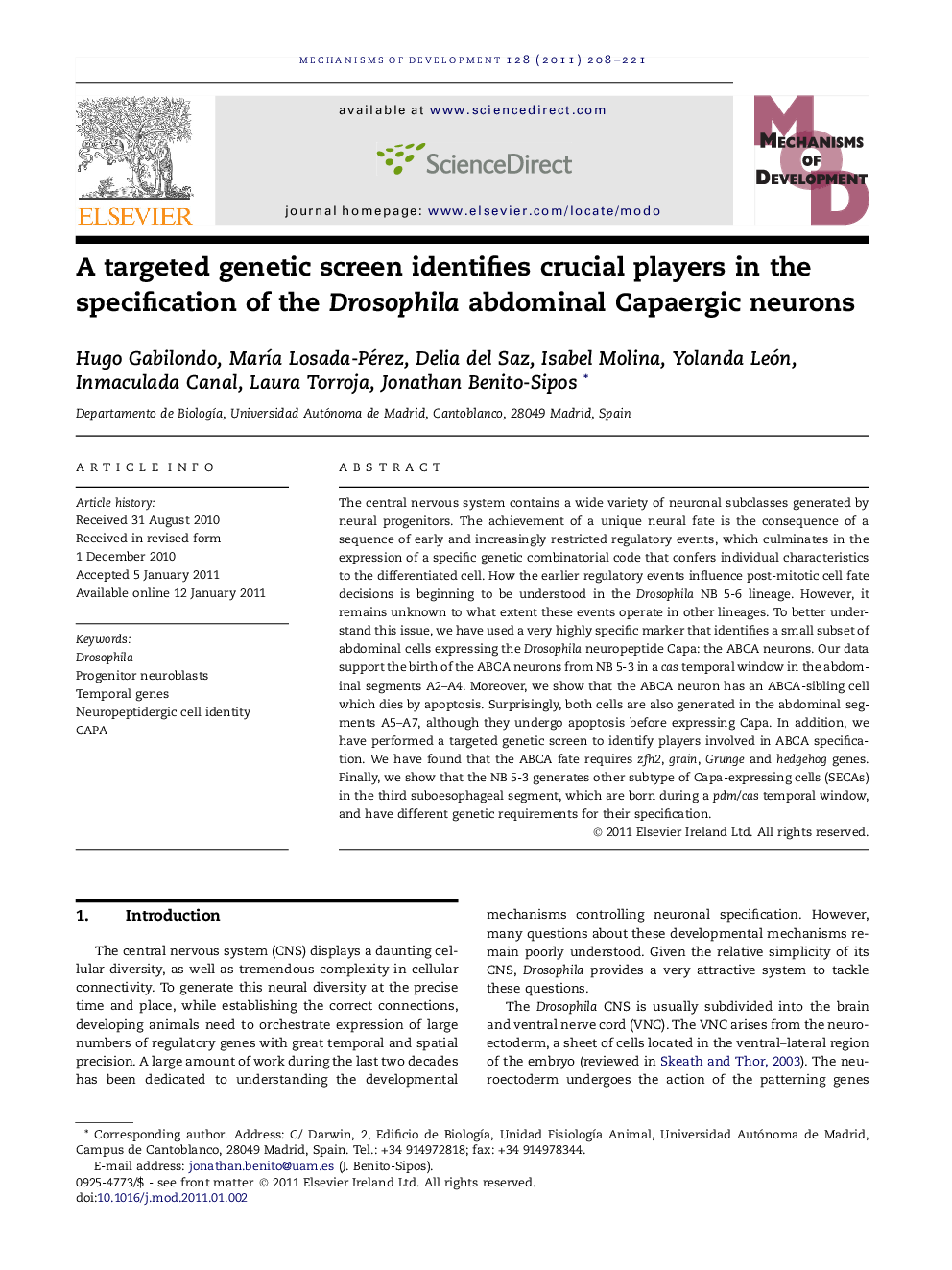| Article ID | Journal | Published Year | Pages | File Type |
|---|---|---|---|---|
| 2195084 | Mechanisms of Development | 2011 | 14 Pages |
The central nervous system contains a wide variety of neuronal subclasses generated by neural progenitors. The achievement of a unique neural fate is the consequence of a sequence of early and increasingly restricted regulatory events, which culminates in the expression of a specific genetic combinatorial code that confers individual characteristics to the differentiated cell. How the earlier regulatory events influence post-mitotic cell fate decisions is beginning to be understood in the Drosophila NB 5-6 lineage. However, it remains unknown to what extent these events operate in other lineages. To better understand this issue, we have used a very highly specific marker that identifies a small subset of abdominal cells expressing the Drosophila neuropeptide Capa: the ABCA neurons. Our data support the birth of the ABCA neurons from NB 5-3 in a cas temporal window in the abdominal segments A2–A4. Moreover, we show that the ABCA neuron has an ABCA-sibling cell which dies by apoptosis. Surprisingly, both cells are also generated in the abdominal segments A5–A7, although they undergo apoptosis before expressing Capa. In addition, we have performed a targeted genetic screen to identify players involved in ABCA specification. We have found that the ABCA fate requires zfh2, grain, Grunge and hedgehog genes. Finally, we show that the NB 5-3 generates other subtype of Capa-expressing cells (SECAs) in the third suboesophageal segment, which are born during a pdm/cas temporal window, and have different genetic requirements for their specification.
